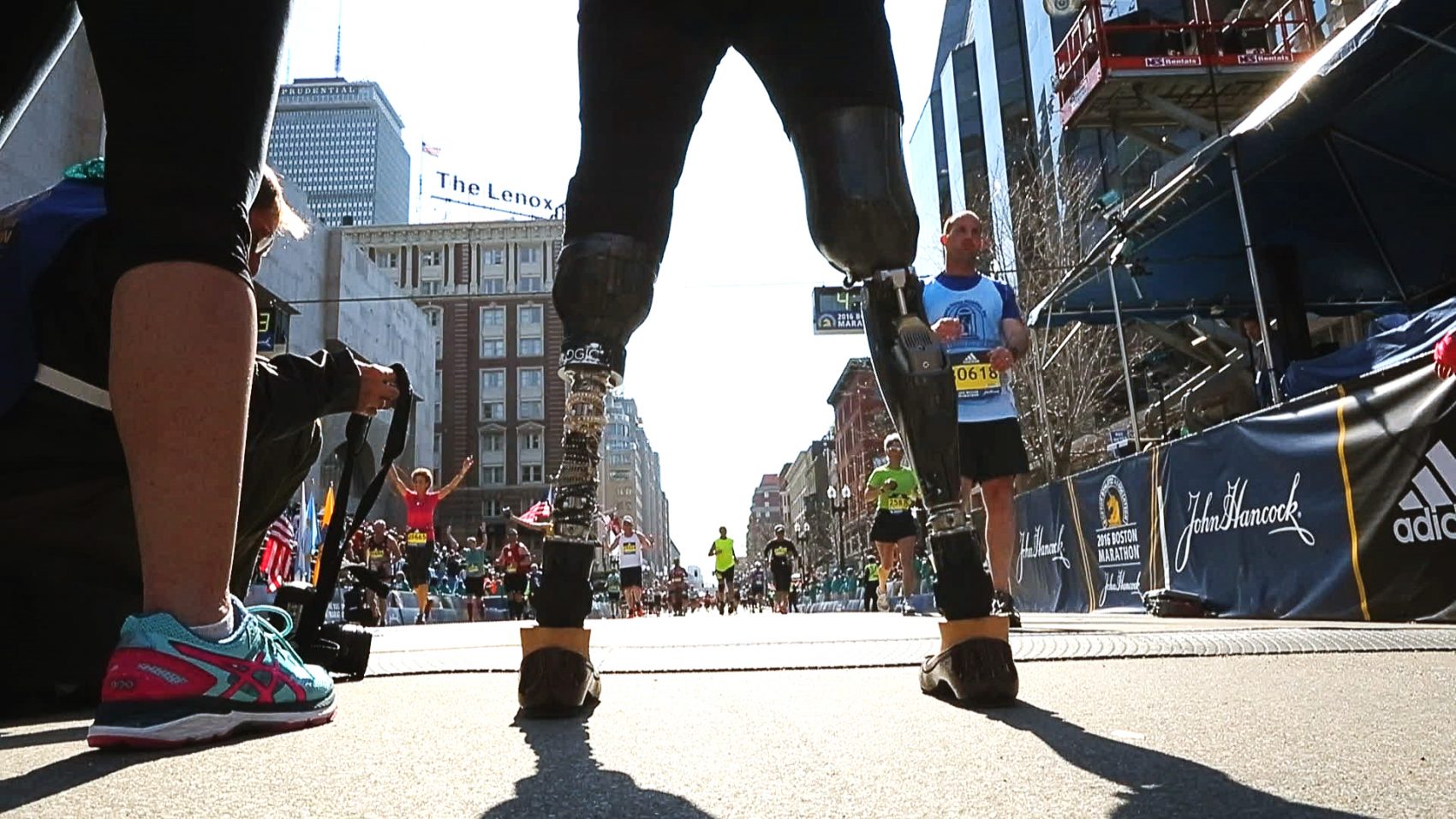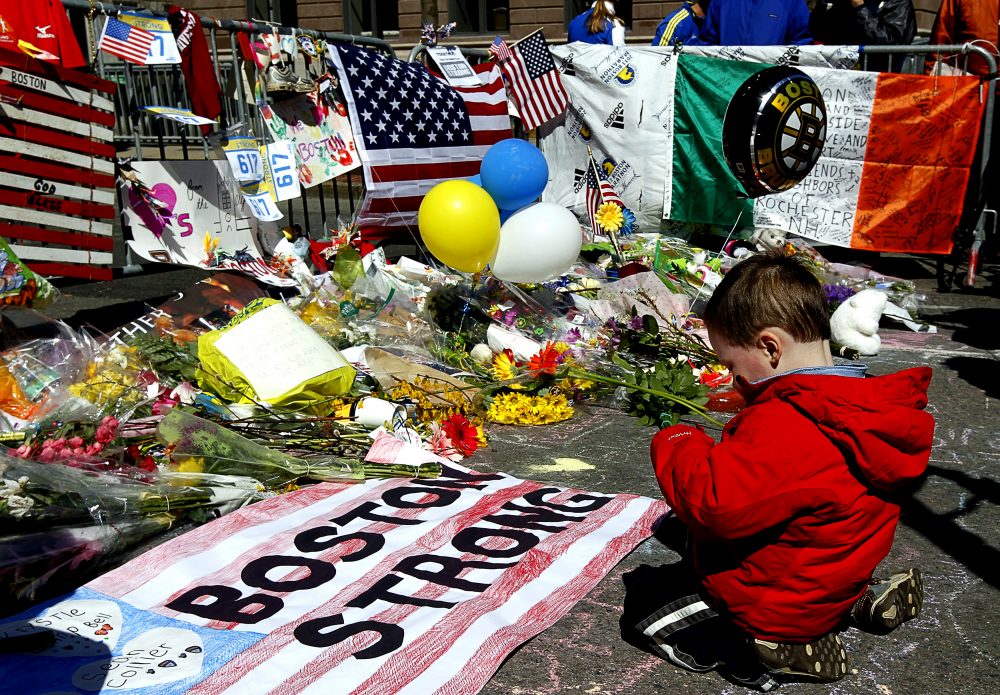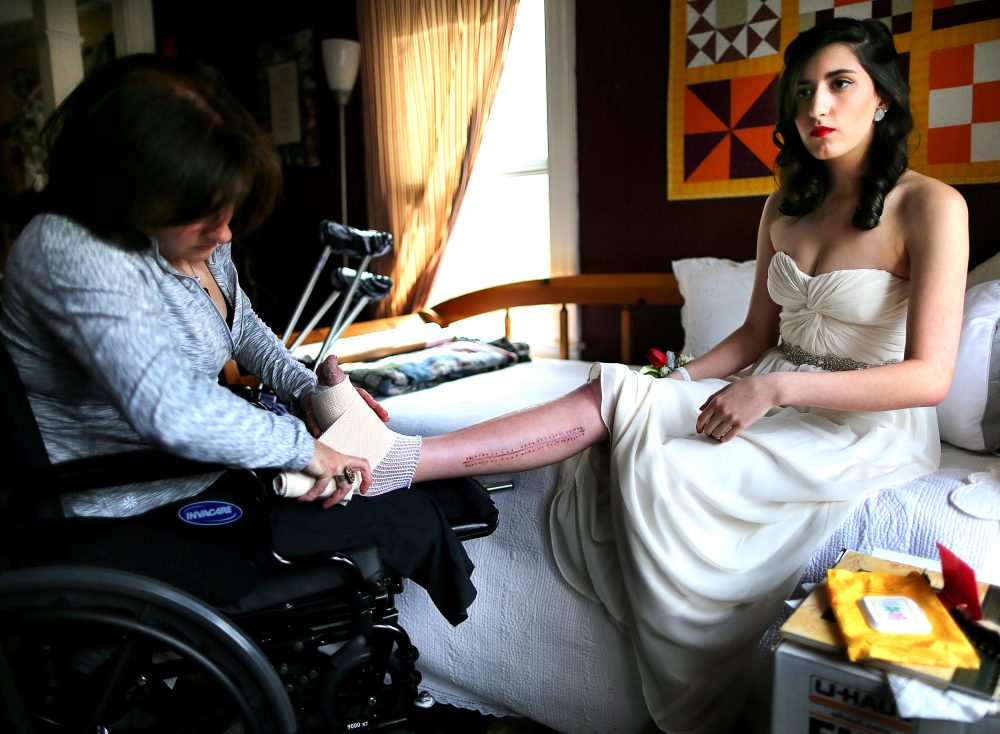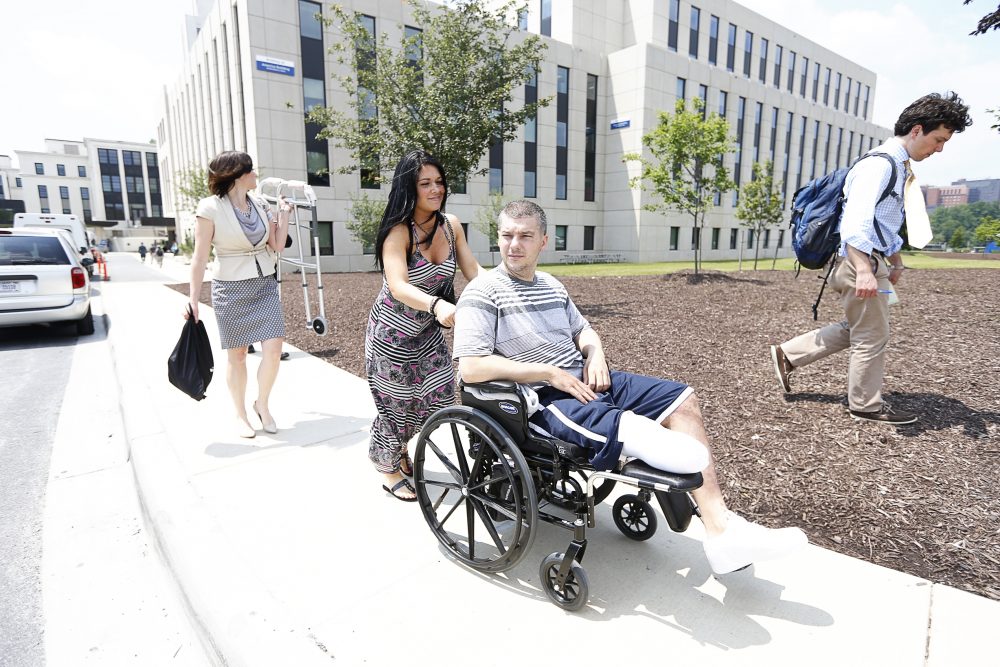Advertisement
‘Marathon’ Chronicles 3 Families’ Complicated Journeys After Boston Bombing

Boston Marathon bombing movies are a delicate matter. Especially around here.
With almost two dozen either out or in the works, the pressure is justifiably on to "get it right." That’s the phrase filmmakers of the forthcoming “Patriots Day” have used to assure locals that their take will honor the city and its losses. (That film, starring Mark Wahlberg as a Boston Police officer, ignited controversy last spring when producers requested permission to replicate the shootout in Watertown and film scenes at University of Massachusetts Dartmouth. Officials ultimately denied access. It’s set for a Boston release on Dec. 21.)
The concern is that Hollywood movies can’t — or won’t — tell Boston’s story with integrity. The ugliness of grief is usually reserved for documentaries.
The emotional new documentary, “Marathon: The Patriots Day Bombing,” recounts the day’s events and aftermath from the point of view of three Boston families. Their path through grief has been long and complicated. Instead of tying up their loose ends as a fictional film might, "Marathon" makes clear that there’s still healing to do.

It’s a competent film, given the brief production timeline (directors Ricki Stern and Annie Sundberg first reached out to the Boston Globe to help identify film subjects in June 2015) and it adds a valuable perspective to the growing list of bombing-related films.
"Marathon" has had advance screenings in Boston, is playing at Coolidge Corner Theatre and premieres on HBO on Monday, Nov. 21.
Among the featured families are mother and daughter Celeste and Sydney Corcoran, brothers Paul and J.P. Norden and the newly-married couple, Jessica Kensky and Patrick Downes. All of them were standing near the finish line in 2013. Their bodies and their lives, along with those who love them, have never been the same.
“Marathon” expands on the Globe’s Pulitzer Prize-winning coverage of the bombings and was produced in association with the Globe. It features interviews with key staff members as well as their articles, videos, photographs and reporter’s notebook audio. Editor Keiko Deguchi deftly cuts between those sources plus a daunting amount of additional news, surveillance, social media, vertically-oriented cellphone and original footage.
One of “Marathon’s” most intriguing moments comes from Globe photographer John Tlumacki. He says he felt he “took something away” from Celeste and Sydney Corcoran when his photographs of them, lying vulnerably in wait of medical triage, went global. “It didn’t sit right with me,” he reveals.
In one scene he visits their house, greeted as “Uncle John,” with a gift in hand. It’s a book filled with images he’s taken of them in the years since the bombing, his gesture to mend the situation.

What a rare glimpse into the fraught intimacies between journalist and subject. Their relationship merited more time than the documentary, as structured, could give. It bears the weight of the whole story — from starting gun through explosions, then manhunt, trial and sentencing. The events of the crime serve as context but reveal little new information.
Those days were tension-filled, to say the least, but they distract from “Marathon’s” core strength: how survivors have been coping alongside their immediate family members.
For Liz Norden, whose sons J.P. and Paul both lost right legs, there’s been a need to see the harrowing blast video over and over. More than 3,000 times, she estimates. The first time she threw up. Scenes like the one of her sitting alone on her sofa, peering at her laptop yet again, convey the relentlessness of grief and the unexpected ways people try to defuse it.
There are two scenes that take place in the Corcoran’s home when Celeste’s husband and Sydney’s father Kevin embraces family members so tightly he looks as if he’s incapable of letting go. As a bystander both on Marathon day and since, his despair is palpable. Neither he nor this documentary turns from it. He owes no one such candor and it makes the film stronger.

In a panel after the Boston premiere at the Shubert Theatre, Patrick Downes said that he and Jessica Kensky often discussed dropping out of the film altogether. Though their story is peppered with Kensky’s wit and multicolored fingernails — and a bittersweet completion of the 2016 Marathon for Downes — Kensky makes the unimaginable decision to amputate her remaining leg. Her scenes are often raw and confessional.
“She’s still in a really bad place,” said Downes. Kensky is facing another surgery soon, which he explained is why she wasn’t on the panel. “Hope is non-linear. You don’t throw a leg on and then you’re good.”
After watching “Marathon” I felt a duty to learn more about all of these families and others affected by visiting the Globe’s online archive, which I highly recommend as a companion to the film. There’s a multimedia story that captures the hope and humor of a visit J.P. Norden made to Walter Reed military hospital, for example.

There are moments of joy in “Marathon,” too. Celeste Corcoran visits her prostheticist in Florida to see if she can get some “beach legs.” Soon she plunges into a pool, somersaults under water then floats to the surface. She wisely observes that “watching me accomplish things I haven’t done before kind of heals everybody.”
But there's nothing Hollywood about whether or not the families have moved on. As the film and its participants bravely show, the need for healing isn't over.
